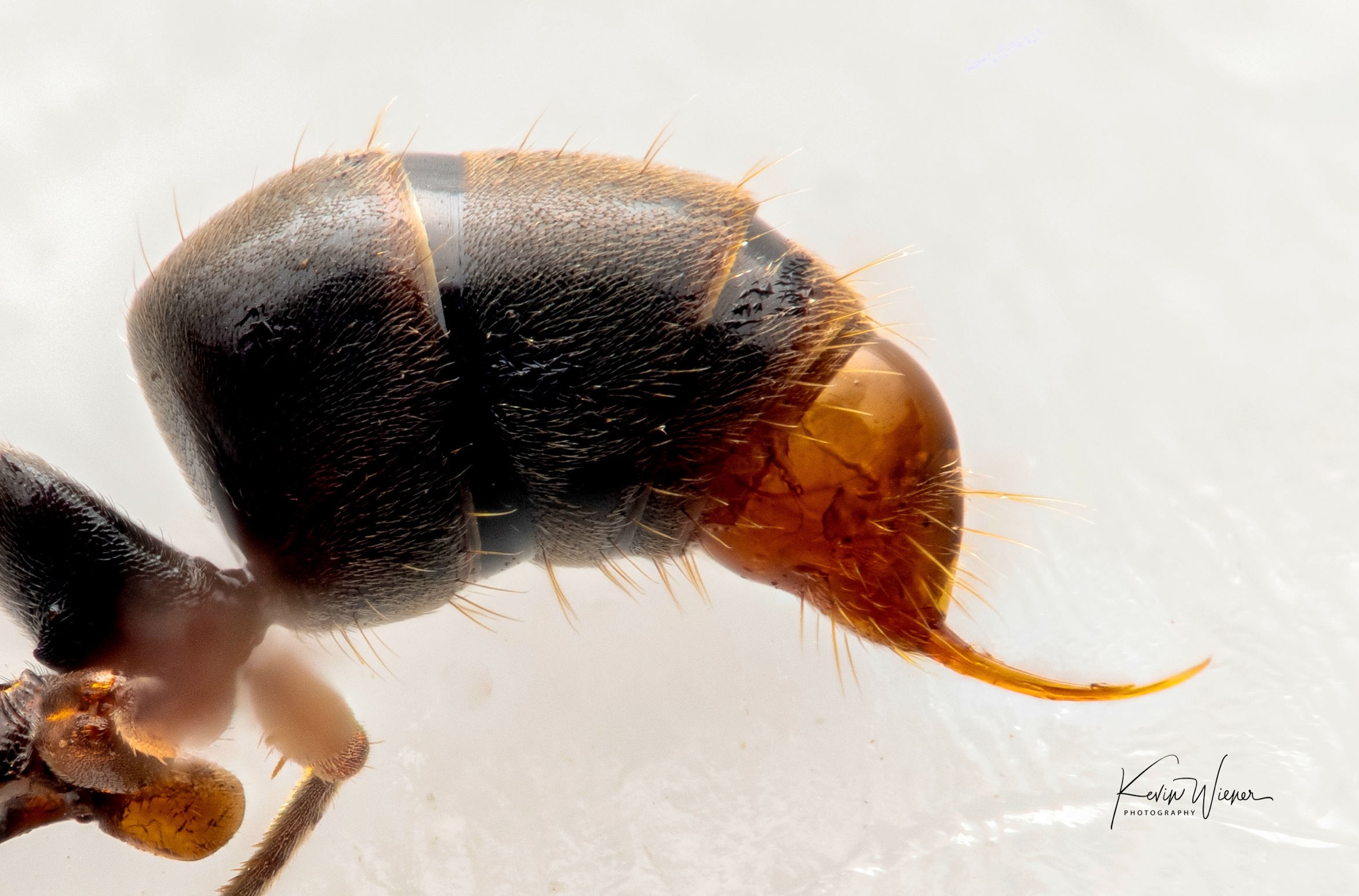First Report of the Invasive Asian Needle Ant in Indiana
Spring 2022
Tim Gibb, Insect Diagnostician and Extension Specialist, Purdue University
Sean Knickerbocker, Entomology Student, Purdue University
Austin Heckelsberg, Insect Naturalist/Photographer, Evansville, IN
Two ant specimens taken from a wooded area in southern Indiana by an astute amateur entomologist, who observed their appearance and behavior as ‘out of the ordinary’, were submitted to the Indiana Department of Natural Resources and to the Purdue University Plant and Pest Diagnostic Laboratory for species identification in February, 2022. Both were confirmed to be Formicidae: Brachyponera chinensis, commonly known as the Asian needle ant, not previously recorded from Indiana.
Asian needle ants (ANAs), originally from Eastern Asia (China, Japan, and Korea), were first discovered in the United States in the early 1930's, but only recognized as a pest since 2006. They have been officially established in several states in the U.S. including North Carolina, South Carolina, Alabama and Georgia and, have been anecdotally reported as far north and west as New York, Tennessee and Kentucky.
Since this first officially-recorded find in a private wetland area near Evansville Indiana, independent colonies of ANAs have been found in surrounding locations, including private parks, urban residences and public recreational areas, suggesting that they are now an established species in our state, rather than a single incidence.
All ANA colonies found in Indiana to date are in moist and shaded, mature wooded areas; in the soil or on the ground under old logs, stumps and decaying plant debris. One sample was found in association with an active subterranean termite colony. From information published in North Carolina(1), such habitats are most commonly invaded by ANA.
Asian needle ants are similar in appearance to both our common odorous house ant (Tapinoma sessile) and the invasive Argentine ant (Linepithema humile) but differ by; 1) having a prominent stinger that protrudes from the lower, rear abdomen when in use, 2) having reddish tinted legs, mouthparts, antennae and stinger, in contrast to the darker black/brown colored body, and 3) being significantly larger (4-5 mm) in length. Colony populations range from hundreds up to a thousand individuals.
Click images to enlarge
Impact: The potential impact of any new insect invader is important and must be carefully assessed by authorities in each state. The Asian needle ant has now become a resident pest in Indiana and it can sting people. Pest managers and public health officials should expect stings to be much like those from a fire ant or wasp; painful burning sensation with the potential to cause more severe reactions in hypersensitive and susceptible individuals, but not normally causing a blister. Fortunately, human interactions with this ant have demonstrated that these ants are much less aggressive than fire ants and because colonies are smaller, the number of stings per encounter is less(2). Even though ANAs may occur in areas commonly frequented by people, including parks, recreational areas, and residential areas, people have normally reported stings only when inadvertently coming in direct contact with the ant such as by picking up logs, stones or when placing bare hands in older mulch piles, or under trees or landscape timbers that have been in contact with soil.
Behaviorally, ANAs are relatively cold tolerant which allows them to emerge earlier in the spring and affords them a competitive advantage over other ants. In addition, they are predatory opportunists, feeding on other insects including termites and other ant colonies. These advantages are especially concerning when considering their potentially negative ripple effect in established ecosystems as they displace native ant species, affect ecosystem balance, interfere with natural organic matter decomposition, reduce pollinator efficacy, and disrupt plant seed dispersal.
Future: It is likely that this ant will spread throughout the state in due course. It’s ability to disperse very rapidly as well as ‘hitch-hike’ has been documented in North Carolina. ANA’s range there now includes areas with high mountain altitudes, suggesting that wintertime temperature extremes in Indiana will not limit its natural spread.
Professional pest managers may expect ANAs to infest natural, commercial and residential sites, sometimes including homes, where commonly used sugar-based baiting strategies will not be effective.
Response: After careful consideration and discussion by Indiana authorities it has been determined that only a basic monitoring program, to delimit ANAs current distribution in the state, is the best course of action at this time. Consideration points included the fact that this ant is not an overly aggressive stinger when compared to other stinging insects, it has already successfully invaded Indiana, control efforts in out-of-door environments are sensitive and have been only marginally effective in other states, and the cost of eradication attempts vs potential for success is high. We therefore invite environmentalists, landscape managers, pest management professionals, and entomologists of all levels to be aware of this new invasive ant and report locations of any new finds to the Cooperative Extension Service.
Note: This information has been broadcast through mass media (television, radio newspaper and on social media), announced in formal meetings of the Indiana and Michigan Professional Urban Pest Management, Indiana Professional Lawn and Landscape Management Associations, the Indiana Vector Control Association Annual Meeting as well as, via this bulletin, to the Indiana Cooperative Extension Service.
*All photographs graciously provided by Kevin Weiner, Evansville, IN.
*Species confirmation by Dr. Bobby Brown, USDA-APHIS Identifier.
References:
(1) https://entomology.ces.ncsu.edu/asian-needle-ant
(2) https://uknow.uky.edu/research/new-stinging-ant-species-could-cause-problems-kentuckians




